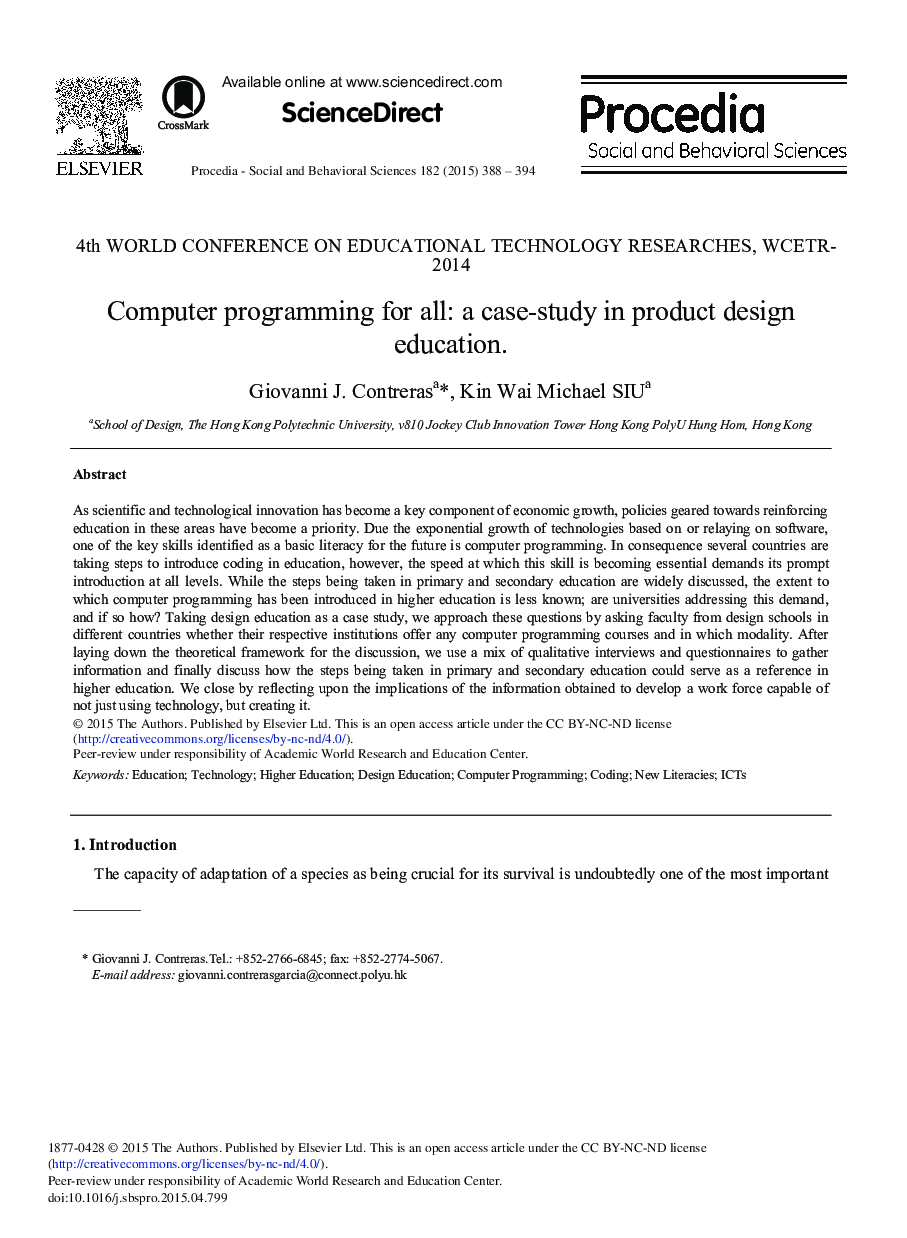| Article ID | Journal | Published Year | Pages | File Type |
|---|---|---|---|---|
| 1110248 | Procedia - Social and Behavioral Sciences | 2015 | 7 Pages |
As scientific and technological innovation has become a key component of economic growth, policies geared towards reinforcing education in these areas have become a priority. Due the exponential growth of technologies based on or relaying on software, one of the key skills identified as a basic literacy for the future is computer programming. In consequence several countries are taking steps to introduce coding in education, however, the speed at which this skill is becoming essential demands its prompt introduction at all levels. While the steps being taken in primary and secondary education are widely discussed, the extent to which computer programming has been introduced in higher education is less known; are universities addressing this demand, and if so how? Taking design education as a case study, we approach these questions by asking faculty from design schools in different countries whether their respective institutions offer any computer programming courses and in which modality. After laying down the theoretical framework for the discussion, we use a mix of qualitative interviews and questionnaires to gather information and finally discuss how the steps being taken in primary and secondary education could serve as a reference in higher education. We close by reflecting upon the implications of the information obtained to develop a work force capable of not just using technology, but creating it.
